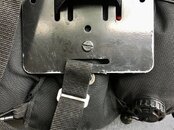Eric Sedletzky
Contributor
Absolutely true.We’ll… sometimes the grass is greener.
If you want a rig optimized for a particular type of diving, and you do more than one type of diving, you’re going to end up with multiple rigs.
There is no one setup that is optimal for every diving environment.
However, I would say that a standard aluminum doubles plate might come the closest. You can use singles and/or doubles. It’s light so you can travel with it to warm water. If it’s too light then you can always add a little weight to your person. If you’re diving cold water and thick suits/drysuit and using an aluminum tank then you’ll need a pretty sizable weight belt/weight system to go with it. If you don’t like weightbelts then this could be an issue.
Aluminum gets a patina though and it can corrode around stainless fasteners and grommets so more care mist be taken. I don’t think there are any strength issues with slots cracking out or other damage occurring, at least I’ve never heard of it.




